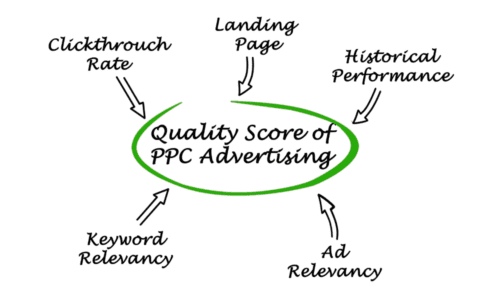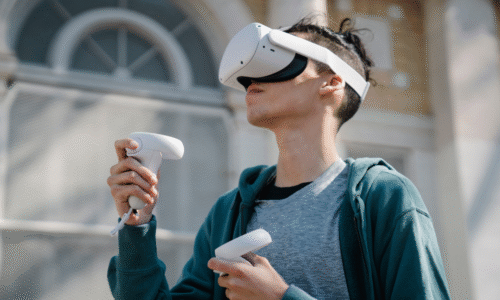When it comes to advertising, the phrase ‘360° campaign’ is thrown around more than promises during election season. Everyone claims they do it, but no one wants to deliver it. But here’s the truth: while the idea sounds impressive, most campaigns touted as “360°” are, at best, surface-level attempts to tick boxes across channels. The result? Noise without harmony.
A true 360° campaign isn’t just about being everywhere—it’s not a Ctrl C + Ctrl V of your original idea to other platforms or channels. It’s about being cohesive, strategic, and impactful across every touchpoint. It’s a carefully choreographed dance where each platform plays its part, building on the others to create an unforgettable experience for the audience.
Let’s break it down. What are the building blocks of a real 360° campaign, and why do so many brands miss the mark?
- The Big Idea
At the heart of every successful 360° campaign lies a singular, powerful idea. This is the backbone—the one thing that ties every element of the campaign together. Without this, your campaign is just a fragmented collection of ads.
The big idea must resonate deeply with the audience while being versatile enough to adapt across platforms. It’s not about saying the same thing everywhere but expressing the same essence through different creative executions.
Example: Nike’s Just Do It has been around for decades because it’s more than a tagline—it’s a philosophy. Whether it’s a TV spot featuring a record-breaking athlete or an Instagram post about a beginner runner, the message remains consistent: empowerment through action.
- Omnichannel Marketing
The mistake many brands make is treating every platform the same. Yes, it’s called a 360° campaign, but that doesn’t mean every channel needs to serve the exact same function. The power of a 360° campaign lies in using each platform for its strengths and ensuring that every interaction builds upon the last.
How it works:
TV/Radio: Traditional media still plays an essential role in creating mass awareness and setting the tone for the campaign.
Social Media: These platforms are where you create community, spark conversations, and build engagement. Instagram might focus on high-impact visuals, while Twitter could fuel discussions around the campaign’s theme.
Experiential/On-Ground: If the campaign has an experiential component—like an event, a pop-up shop, or augmented reality (AR) experiences—it’s a chance to take the campaign off the screen and into the real world. This is where your brand can truly live and breathe.
Email/CRM: Email gives you the chance to nurture the customer, providing more in-depth content and offering exclusive deals.
Each of these channels serves a distinct purpose but, together, they form a seamless customer journey.
Example: Nike’s “You Can’t Stop Us” campaign used a combination of digital ads, social media videos, and influencer partnerships to keep the conversation going across various platforms, each contributing a unique layer to the campaign. For example, apart from the ads, the brand created a Snapchat lens that let users join the video montage and share their own stories about how they overcame obstacles. They also launched products like the “Be True” collection that celebrated the LGBTQ+ community in line with their idea of inclusivity and diversity.
- Across All Touchpoints
Imagine watching a movie where the plot changes dramatically from scene to scene. You’d be confused, disoriented, and probably lose interest. The same principle applies to a 360° campaign. If the story isn’t consistent across touchpoints, you risk losing your audience. Each channel, from TV to digital ads to emails, should tell a part of the same story. The message, the tone, and even the visual style should align so that the audience is constantly immersed in the same narrative.
How it works:
Start with teaser content (Instagram stories, short social media posts) to pique curiosity.
Follow up with the main campaign (TV commercial, paid digital ads) to provide deeper context.
Engagement content (email offers, interactive social media posts, gamified experiences) keeps the story alive.
Example: Apple’s product launches are a perfect example of how storytelling flows across platforms. From the highly anticipated event keynote to the ads on TV, to social media teasers, and finally to the in-store experience, every piece of content seamlessly integrates into one cohesive story.
- Designing for Each Platform: The Visual Consistency
A 360° campaign demands visual consistency, but it also requires that the visuals are optimized for each platform. For instance, Instagram needs striking visuals and short captions, while a TV commercial relies on emotional music and longer narratives. Understanding the visual nuances of each platform is key.
How it works:
- For visual platforms like Instagram and Pinterest, focus on imagery that’s visually striking and resonates with the audience on an emotional level.
- For video-heavy platforms like YouTube or TV, ensure that the content is cinematic and tells a more detailed story.
- Websites and apps should act as the information hub, providing additional details and a clear path to conversion.
Example: IKEA’s AR-based ads for their app Ikea Place helped create an immersive experience by leveraging augmented reality. The campaign was visually consistent with their usual style, but optimized for mobile, ensuring a seamless experience for users. This led to a 14% increase in sales and a 35% reduction in product returns within a year.
- Real-Time Data and Adaptation: Always Be Ready to Pivot
Here’s the thing: a 360° campaign isn’t set in stone. It’s a living, breathing entity that must adapt in real time. That means tracking performance across platforms, analyzing what’s working, and adjusting strategies on the fly.
How it works:
Use real-time analytics to track engagement, sales, and awareness metrics.
Use insights to tweak content, optimize ads, and refine your strategy across channels.
Test different variations of content to see what resonates best with each segment of your audience.
Example: Burger King’s “Whopper Detour” campaign used mobile ads and geo-location to deliver a unique offer based on real-time data, allowing the brand to dynamically adapt to customer behavior and drive foot traffic. People who went within 600 feet of a Mc Donald’s were delivered a mobile notification offering a 1 cent Whopper. After interested customers placed an order, they were directed away from Mc Donald’s to the nearest Burger King outlet to receive their order. The app drew 1.5 million downloads showing how Burger King found a fresh way to leverage emerging platforms.
- Why 360° Campaigns Work
When executed properly, 360° campaigns deliver far-reaching benefits:
- Complete Audience Reach: With the right mix of channels, you can reach your target audience no matter where they are.
- Stronger Brand Recognition: Consistent messaging across platforms reinforces your brand’s identity and builds trust.
- Greater ROI: By utilizing each platform’s strengths and maintaining synergy, you maximize your investment and ensure better outcomes.
- Emotional Connection: A 360° campaign creates an immersive experience that goes beyond ads—it becomes part of the audience’s life.
At Outreach Advertising LLC, we take 360° campaigns seriously where we strategize and craft each element across each touchpoint to ensure it brings your brand’s core message to life.
Whether digital, experiential or traditional, we have the expertise to make your campaign a success.
Ready to see your brand’s vision come to life in a 360° campaign? Let Outreach Advertising LLC guide the way.
Related Posts

- Outreach
- March 9, 2023
What is Google Ads Quality Score and why does it matter?
PPCs not performing well? Campaign strategies failing to turn around the numbers?&n ..





